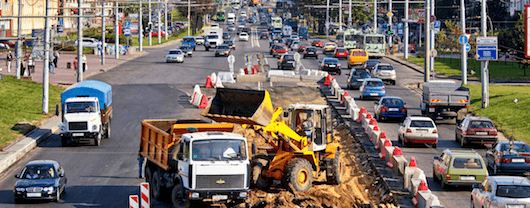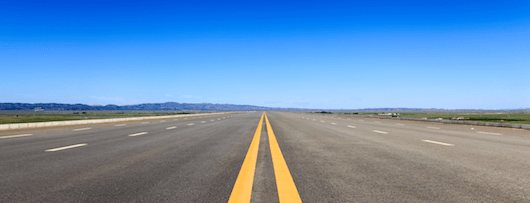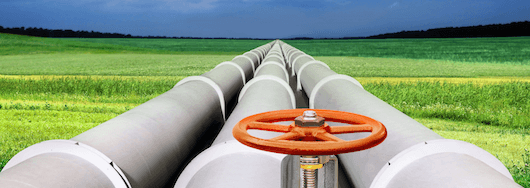
When we connect the Internet at home, one of the main characteristics of choosing an Internet provider and tariff is the speed of the Internet connection. Let's try to figure out what it is with the help of simple examples.
Let's start, perhaps, with the units of measurement of Internet speed for those who do not know. Those in the know read on from here.
Internet speed and how it is measured
You probably know that the speed of a car, person, train or any other vehicle is measured in different units. If we are talking about a car, then its speed can be 100 km per hour, the speed of an ant or turtle would probably be more logical to measure in meters per hour, and that of space objects in thousands of kilometers per hour. Similarly, there is a scale for measuring Internet speed.
The speed of a car is calculated by the number of kilometers the car has covered per unit of time, while the speed of the Internet connection is calculated by the amount of information transmitted per unit of time.
The unit of information is a bit or a byte. There are 8 bits in one byte. And by analogy with many other units of measure, the prefix kilo (1000), mega (1000000), giga (1000000000), etc. can be attached to these very bits and bytes.
Currently to indicate the speed of an Internet connection most often the value of megabits per second (Mb/s) is used. For example, a speed of 20 Mbps means that in 1 second you can download (or upload) a 20 megabit file. Many people are often confused and lost in units of measure. As we have mentioned above, 1 byte is equal to 8 bits. So 20 megabits is 2.5 megabytes (20 : 8 = 2.5). And by analogy, the speed of 20 megabits per second is the same as 2.5 megabytes per second.
It is customary to abbreviate bits with a lowercase letter b and bytes with an uppercase B. Basically, that is the reason for the confusion. 20 Mb/s is 20 megabits per second, and 20 MB/s is 20 megabytes per second. Be careful with this, because the same letter typed in a different register means a value 8 times smaller or larger. So, for example, 20 MB/s is 8 times more or faster than 20 MB/s.
When talking about the speed of an Internet connection, we usually mean the maximum possible speed. But it is not always and not in any circumstances that such a speed can be achieved.
Internet speed and congestion of channels
Suppose we need to get from one city to another by car. We calculate the route and get as a result the time we need to reach our destination. But in this case, we get an ideal option that does not take into account traffic jams, bad weather conditions, and after all a need to go to the toilet or stop at a cafe for a snack. And as a result, the calculated travel time increases by 20 to 30% or even 2 to 3 times.

This is exactly the case with the speed of the Internet connection. The provider, when selling his tariff to us, uses the maximum possible values. As a result, we get the speed that remains after eliminating all collateral factors. Another example: a 25 km road section. Straight, paved, clean. We are driving a sports car that can travel at a speed of 250 km/h. This is what the manufacturer has promised us and we are going to check it. We take the wheel, accelerate to 250 km/h and fly 10 km in 6 minutes. A perfect result.
And now 20 huge cobblestones are being rolled out onto the road, small pebbles are scattered in a dozen of places, and here and there the road is flooded with water and frozen. We are driving again, but we can’t keep the speed of 250 km/h all the way, we have to dodge stones, brake on ice, etc. As a result, we cannot drive at the promised speed all the way, so the time it takes us to drive this section increases.
This is exactly the case with the speed of the Internet connection. The provider indicates in the tariff the maximum Internet speed that can be achieved on "clean" Internet channels, with no obstacles or interference. But as soon as there are factors that in one way or another interfere with the passage of the signal, the Internet speed decreases..
So what are these factors? There may be a lot of them. The main one, perhaps, is congestion of channels. Suppose you are not driving alone on the same road, but 30 more cars are driving with you, each with a maximum speed of 250 km/h. Do you think you can get there quickly? No. You will interfere with each other and as a result, no one will be able to drive at a speed of 250 km/h.
Internet speed and distance
In this case, it is helpful to recall that the distance is also of great importance. What distance are we talking about? We are often asked why the results of measuring the Internet connection speed in your Internet speed test differ from those in other services. The results are different, because on different services measurements are made with different servers.

There is only one way to measure the speed of an Internet connection: to check the amount of information downloaded or uploaded per unit of time. But this information must be taken from somewhere. And this is a very important factor. You can receive information from a computer next to you that is in another room or from a computer that is installed in a house next to you or from a computer that is installed at your provider or maybe from a computer that is located in Germany.
Accordingly, as we have already found out above, the farther the way to the server we take information from, the more interference is on the way, which means the lower the Internet speed will be as a result. If you measure the speed with the server of your Internet provider located at a distance of several kilometers from you, then the probability of no interference is high, and the speed will be almost equal to the one promised to you at the rate, but if you measure the speed with a server located in another country, then the information to get to your computer is to travel thousands of kilometers through the networks of various Internet providers, with all kinds of obstacles and surprises awaiting it on the way, as a result of which the speed will decrease. Thus, the closer to you the server you measure with, the higher the speed of the Internet.
Internet speed and channel width
But this is not all. On the Internet, all signal paths can be compared to water pipes. The wider the pipe, the more water can pass through it per unit of time. The same thing happens with Internet channels. The larger, wider the channel, the more information can be transmitted per unit of time and, accordingly, the greater the Internet speed will be.
Have you ever encountered a situation where in your high-rise building, all of a sudden, at one point in time, everyone have decided to take a shower? The water pressure in the shower has decreased; you have less water to flow. This happens because the diameter of the pipe feeding your house is limited, with only a certain volume being able to pass through it per unit of time. With 10 people going to wash, there is enough water, but if everyone goes to wash, there is a lack of water.

Imagine that an ISP has allocated a 1 Gb/s channel for your area. This means that the channel width allows 1 Gb of data to pass through in 1 second. If you and 10 other people from your area are on the Internet, all of you being connected to the 20 Mb/s tariff and using it to its fullest (downloading movies, for example), then all of you together use only part of the channel. Those. 10 people at 20 Mb/s occupy approximately 200 Mb/s of the channel, while its width is 1 Gb/s. You occupy only 1/5 of the channel. But then the evening comes, everyone sits down at their computers and starts downloading movies. And now there are already 100 of you, each channel having 20 Mb/s, and for everyone to be able to download at a speed according to the tariff, you all need a channel volume of 2 Gb/s, and the provided channel is only 1 Gb/s, which is 2 times less. Thus, the speed of the Internet connection for everyone is reduced by at least 2 times.
We often receive letters from our visitors who are at a loss who to believe. All speedometers show different values. Measurement results may differ by orders of magnitude. We hope that our article has cleared things up a bit for you. And in conclusion, let’s make a short summary.
Short conclusions
- Internet speed depends on many factors and may vary depending on the time of day and network load.
- It is important to understand that Internet speed is measured in bits and bytes. Always compare tariffed and measured speeds in the same unit of measure.
- The farther away from you is the server for measuring the speed of the Internet connection, the lower the speed.
- The more subscribers of the provider are simultaneously on the Internet, the lower the speed of the Internet connection.